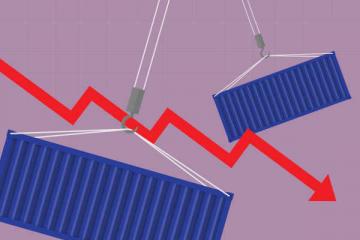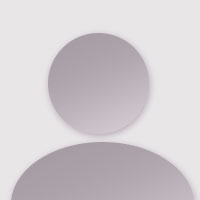Sorry, but your login has failed. Please recheck your login information and resubmit. If your subscription has expired, renew here.
December 2019
If it’s December, it must be time for our annual Executive Guide to Supply Chain Resources. This is a comprehensive guide to services, products and educational opportunities targeted specifically to supply chain professionals. As with years past, we’re also featuring several articles we trust will offer food for thought in your supply chain in the coming year. Browse this issue archive.Need Help? Contact customer service 847-559-7581 More options
After the brutal climb of 2018, with cost increases and capacity crises across all logistics sectors, the industry stabilized in 2019. Indeed, industry innovations and slower economic growth are likely to temper any additional price increases in 2020—assuming relative political stability. After cresting from a long climb, the coming year will bring both uncertainty and opportunity.
For a decade, the story of logistics has been a story of rising prices and capacity shortages. U.S. business logistics costs (hBLC) have risen every year but one since 2009 (2016 saw a 1.3% drop). Driven by exploding e-commerce volumes and robust GDP growth, demand for logistics services has continually outstripped supply across most sectors. But late in 2018, and continuing through 2019, demand softened, putting future growth in doubt. No steep decline is yet evident, so it still looks like logistics has toughed out a steep grade to finally crest a hill.
Although the crest gives shippers a chance to catch their breath, it presents its own uncertainties and opportunities. Will trade tensions or economic slowdowns lead to substantial volume reductions? Will operators continue to cut capacity and bring markets back in balance? Will shippers retaliate, clawing back on carriers’ rate increases—or will they use this opportunity to set more sustainable relationships for the future? And as always, where will accelerating technological change transform parts of the industry next year, as opposed to improving it in small increments?
The data: 2018’s cost increases
The latest official USBLC calculation—by A.T. Kearney and the Council of Supply Chain Management Professionals (CSCMP)—is for 2018, and shows that costs again rose, by 11.4%. All sub-segments of USBLC costs increased to their highest levels since 2014. Inventory led the way with a 14.8% overall cost increase. Certain transportation modes, such as intermodal and private fleets, also saw big jumps (see Figure 1).

This complete article is available to subscribers only.
Log in now for full access or start your PLUS+ subscription for instant access.
SC
MR
Sorry, but your login has failed. Please recheck your login information and resubmit. If your subscription has expired, renew here.
December 2019
If it’s December, it must be time for our annual Executive Guide to Supply Chain Resources. This is a comprehensive guide to services, products and educational opportunities targeted specifically to supply chain… Browse this issue archive. Access your online digital edition. Download a PDF file of the December 2019 issue.After the brutal climb of 2018, with cost increases and capacity crises across all logistics sectors, the industry stabilized in 2019. Indeed, industry innovations and slower economic growth are likely to temper any additional price increases in 2020—assuming relative political stability. After cresting from a long climb, the coming year will bring both uncertainty and opportunity.
For a decade, the story of logistics has been a story of rising prices and capacity shortages. U.S. business logistics costs (hBLC) have risen every year but one since 2009 (2016 saw a 1.3% drop). Driven by exploding e-commerce volumes and robust GDP growth, demand for logistics services has continually outstripped supply across most sectors. But late in 2018, and continuing through 2019, demand softened, putting future growth in doubt. No steep decline is yet evident, so it still looks like logistics has toughed out a steep grade to finally crest a hill.
Although the crest gives shippers a chance to catch their breath, it presents its own uncertainties and opportunities. Will trade tensions or economic slowdowns lead to substantial volume reductions? Will operators continue to cut capacity and bring markets back in balance? Will shippers retaliate, clawing back on carriers' rate increases—or will they use this opportunity to set more sustainable relationships for the future? And as always, where will accelerating technological change transform parts of the industry next year, as opposed to improving it in small increments?
The data: 2018's cost increases
The latest official USBLC calculation—by A.T. Kearney and the Council of Supply Chain Management Professionals (CSCMP)—is for 2018, and shows that costs again rose, by 11.4%. All sub-segments of USBLC costs increased to their highest levels since 2014. Inventory led the way with a 14.8% overall cost increase. Certain transportation modes, such as intermodal and private fleets, also saw big jumps (see Figure 1).
 SUBSCRIBERS: Click here to download PDF of the full article.
SUBSCRIBERS: Click here to download PDF of the full article.
SC
MR


More 3PL
- Q1 sees a solid finish with positive U.S.-bound import growth, notes S&P Global Market Intelligence
- Orchestration: The Future of Supply Chain
- February and year-to-date U.S. import volume is solid, reports S&P Global Market Intelligence
- 2024 retail sales forecast calls for growth, says National Retail Federation
- ISM reports another month of services sector growth in February
- February manufacturing output declines, notes ISM
- More 3PL
Latest Podcast

 Explore
Explore
Topics
Business Management News
- Joseph Esteves named CEO of SGS Maine Pointe
- Employees, employers hold divergent views on upskilling the workforce
- April manufacturing output slides after growing in March
- Q1 sees a solid finish with positive U.S.-bound import growth, notes S&P Global Market Intelligence
- 6 Questions With … Sandeep Bhide
- MIT CTL offering humanitarian logistics course
- More Business Management
Latest Business Management Resources

Subscribe

Supply Chain Management Review delivers the best industry content.

Editors’ Picks






